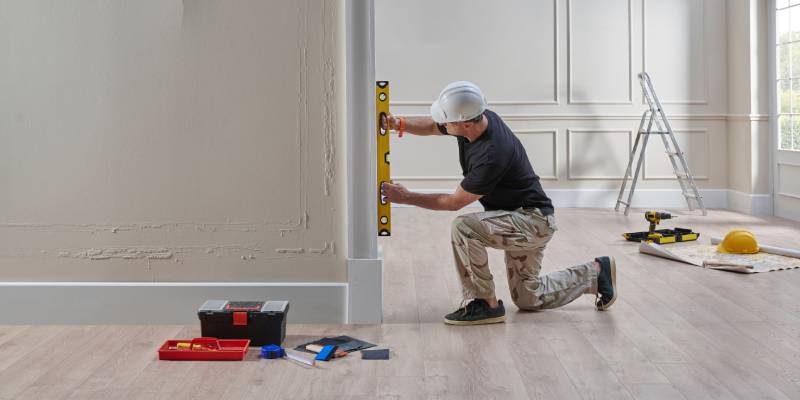Home renovations can bring out the best and worst in a home—and in you. There’s the thrill of imagining how it could look, and then there’s the grit of living in dust, delays, and decisions you didn’t know you’d have to make. Whether you’re updating a single room or transforming an entire property, being prepared makes the process smoother and more satisfying. Here’s what to expect, where things can go sideways, and how to keep your renovation on track.
Start With The End In Mind
Before you knock through a single wall, take time to visualise your renovation goals clearly. Are you after more space, better energy efficiency, a style update, or all three? Clarity at this stage will drive better decisions later. Take measurements, sketch floor plans, and think about how you use the space now versus how you want it to function in the future. Dream of Home offers practical advice on how to articulate your goals before getting stuck into choices about tiles or taps. This isn’t fluff; it’s your north star.
Paperwork, Receipts & Chaos
You’ll drown in documentation: contracts, estimates, approvals, change orders, invoices, warranties. Lose one, and you may lose leverage. Keep everything digital and searchable. With a free scanner app, you can turn paper trails into cloud-accessible PDFs. This makes it easier to track who said what, when, and for how much. Renovations often involve as much admin as action. Get ahead of it.

Budget For More Than You Think
Renovation budgets have a habit of inflating when you’re not looking. That quote for new windows? It doesn’t include scaffolding. That sleek kitchen? The delivery fees, skips, and fitting costs are separate. Always build in a cushion. The golden rule: build in a 10% contingency buffer. This gives you breathing room for inevitable surprises—like discovering damp, rewiring needs, or that one big-ticket item you can’t resist. Budgeting for the unexpected isn’t pessimism. It’s insurance against panic.
Don’t Skip Planning Permission Checks
Not every renovation requires planning permission, but assuming you’re in the clear can derail your entire timeline. Even if you think your plans fall under Permitted Development, always double-check. Loft conversions, rear extensions, or changes to listed buildings often come with caveats. It’s your responsibility to verify if planning permission is required. If in doubt, speak to your local council or consult with your architect. The rules might feel grey, but enforcement is not, and retrospective permission is a pain.

Choose Your Pros Carefully
Finding the right tradespeople is half the battle. You’ll need specialists who understand the UK’s building regs and your vision. Don’t just go with whoever’s cheapest or available first. Ask for references, view previous work, and get detailed written quotes. For more complex projects, hire an architect for structural design and spatial planning. A good one will add far more than they cost, often spotting opportunities or problems that a builder alone might miss. It’s not just about expertise—it’s about accountability.
Renovation Has A Rhythm
Most projects follow a predictable sequence: demolish, assess, rebuild, refine. It’s vital to follow the renovation step sequence to avoid backtracking or delays. Ripping out floors before rewiring? That’s a redo. Painting walls before checking for damp? That’s double work. Line up your schedule with the big structural items first (foundations, wiring, plumbing), then work your way inwards to finishes and fixtures. And pad the timeline. Delays are normal, but chaos is optional.

The Curveballs Will Come
Even the best plans meet unexpected snags. Materials run out. Subcontractors vanish. That reclaimed timber floor warps in the wrong weather. The key isn’t to prevent every hiccup—it’s to remain agile when they appear. One common oversight? Lighting. Homeowners often finalise electrical layouts too early or too late. A smarter move is to get lighting planned with electricians once you’ve walked through how each room will be used. Treat design decisions like they matter, because they do. The little things aren’t little.
Protect Your Energy
Even a small renovation will test your stamina. Decision fatigue sets in. Mismatched deliveries show up. Dust gets everywhere. Instead of aiming for the whole house at once, pace updates room by room. This keeps you functional and sane, especially if you’re living in the house while work happens. Carve out at least one untouched sanctuary to escape the mess. And remember, taking breaks isn’t slacking—it’s smart project management.

Small Touches, Big Impact
It’s easy to get lost in major upgrades, but don’t overlook the power of small, thoughtful features. Skirting boards, window ledges, ceiling trims, and even old furniture can completely shift a room’s character with just a bit of care. Found an old window frame in the garage? Clean it up, sand it down, add a coat of paint, and suddenly you have a rustic mirror or a statement piece. The same goes for forgotten chairs or tables—a bit of filler, some sanding, and a new finish can give them a second life. These details cost little but add texture and soul, reminding you that not all transformation needs to be structural.
A renovation isn’t just about bricks and budget. It’s about flow, friction, and mindset. Know your end goal, brace for bumps, and surround yourself with people who know what they’re doing. Make room in your plans—and your patience—for what you can’t control. Done right, a home renovation is not just a transformation of space, but a serious upgrade to how you live.
Discover the perfect finish for your project with DC Paint Solutions, where bespoke spray paint cans are crafted to your exact specifications for both commercial and industrial needs.





